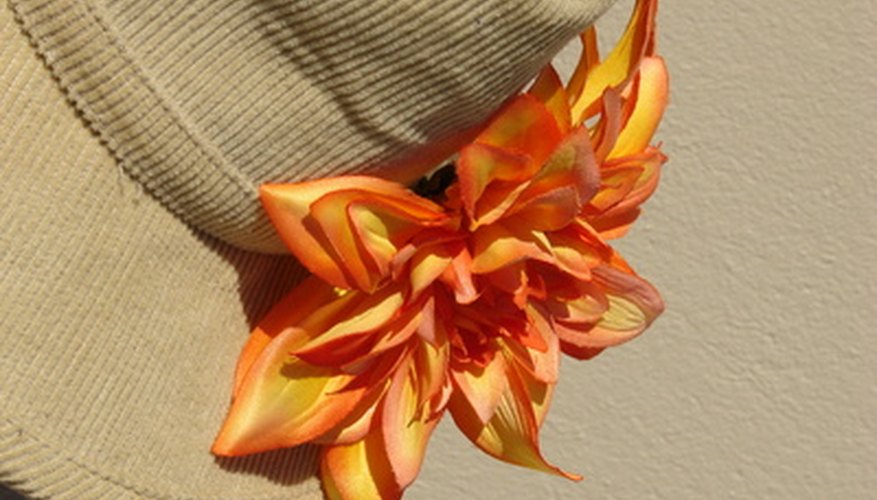Vintage women’s hats are fashion history, representing the style of the era. Women regularly wore hats and they were a part of fashion up until the latter part of the 20th century. Vintage men’s hats are not as easily dated due to the unchanging styles that were worn for long periods of time. You can learn to identify vintage hats by the fabrics, characteristics, labels and style.
Look at the construction. Hats were handmade before the 1930s and had lining that was hand-sewn. If the hat has machine sewing in the lining, it is later than 1930. It may have some hand sewing and be twenty years older than the 1930s, as there were patterns and instructions for making 1950s hats, but machine sewing dates a hat to after 1930. The V-shaped wire clamps on the sides of a hat became popular in the 1950s. Some assembly was done with milliner’s glue and wire was common construction material inside hats in the 1950s.
- Vintage women’s hats are fashion history, representing the style of the era.
- Some assembly was done with milliner’s glue and wire was common construction material inside hats in the 1950s.
Check the tags. Size labels were not used until about 1940. Use a website like Vintage Fashion Guild for a designer label resource to compare the label in the hat with pictures of labels online. This includes the dates of production or the life of the designer to help date vintage clothing and hats.
- Size labels were not used until about 1940.
- Use a website like Vintage Fashion Guild for a designer label resource to compare the label in the hat with pictures of labels online.
Learn the fabrics and decorations. Twenties hats were frequently made of horsehair, felt and straw. Ostrich plumes were used during the World War II era. Fabric flowers were used from the 1940s and sequins were used from the late 1930s onward. Hats of the 1950s were often velvet with tulle or net and sometimes fur and feathers. Plastic fruit and flowers were mostly 1950 and after. Rhinestones and pearls were the rage in the 1950s. Fabrics with polyester were not used until the early 1960s, so polyester and cotton lining fabrics date the hat to the 1960s and later. View vintage hats online at a website like Vintage Hat Box to learn more.
Look at the style. Hats from the 1920s were often cloche style, fitting close to the head. Hats from the 1930s were generally small and often variations of the fedora style. Hats from the 1940s were often very small, covering only the crown. Hatpins held them in place and a round wire loop at the back helped keep them secure. The pillbox hat is an example of style of an era. Balenciaga designed the pillbox in the 1950s and Jackie Kennedy made it popular in the early 1960s. Hats of the 1950s were small and often had a short veil. Hats started to lose favour by the 1960s. Hats of the '60s were larger, bolder, less formal and worn less because of the bouffant hair styles. Hats of the 1970s were even larger, often broadbrimmed and outlandish.
- Hats from the 1920s were often cloche style, fitting close to the head.
